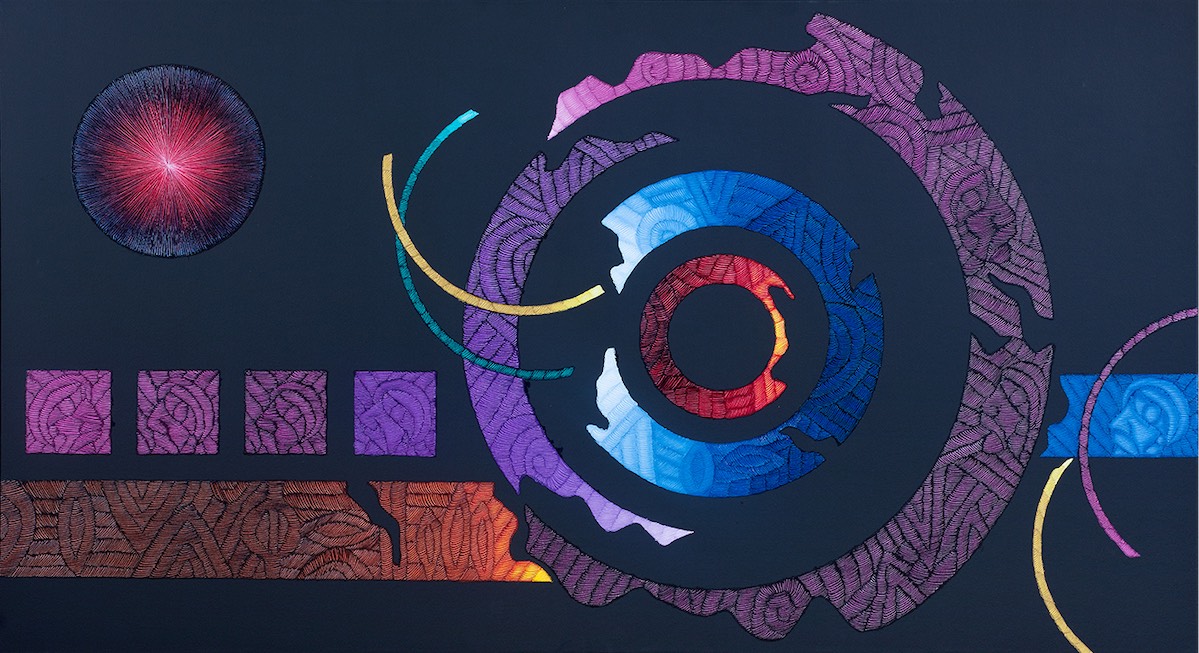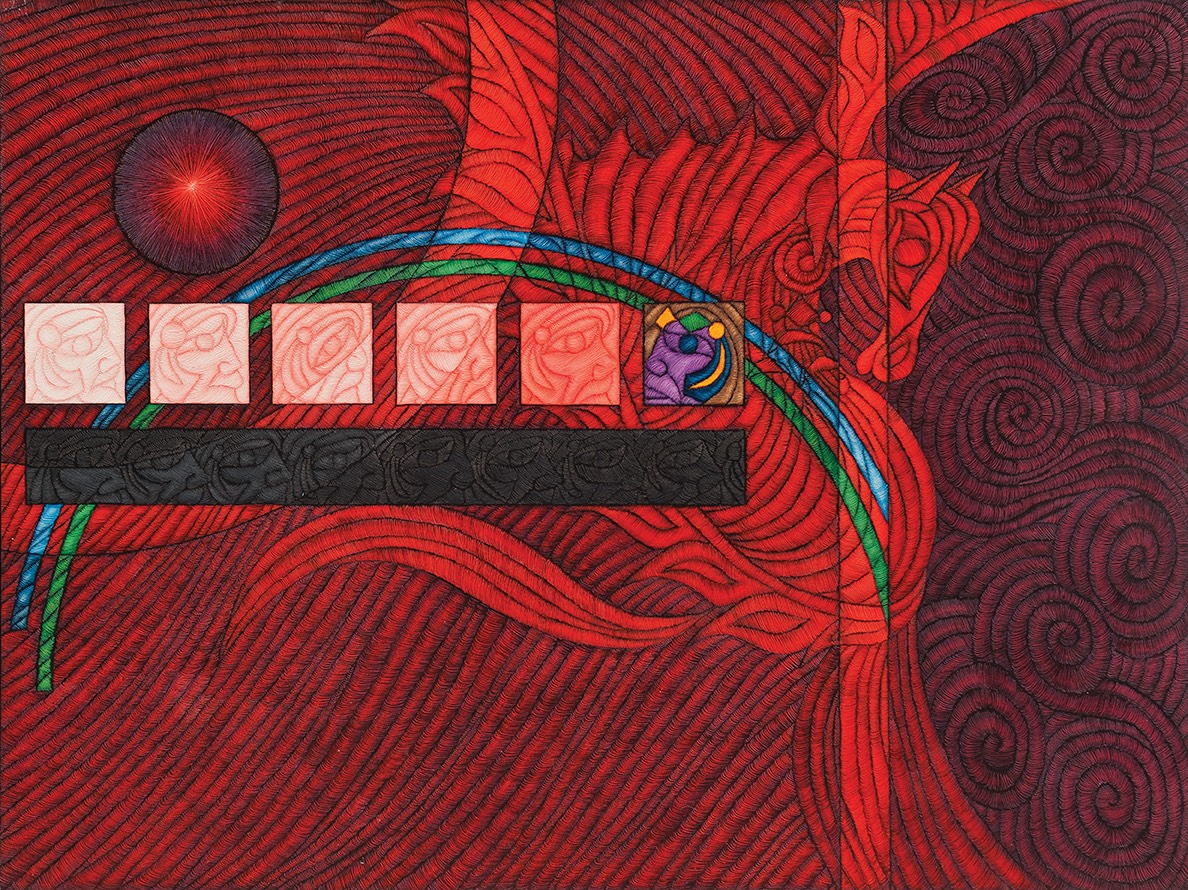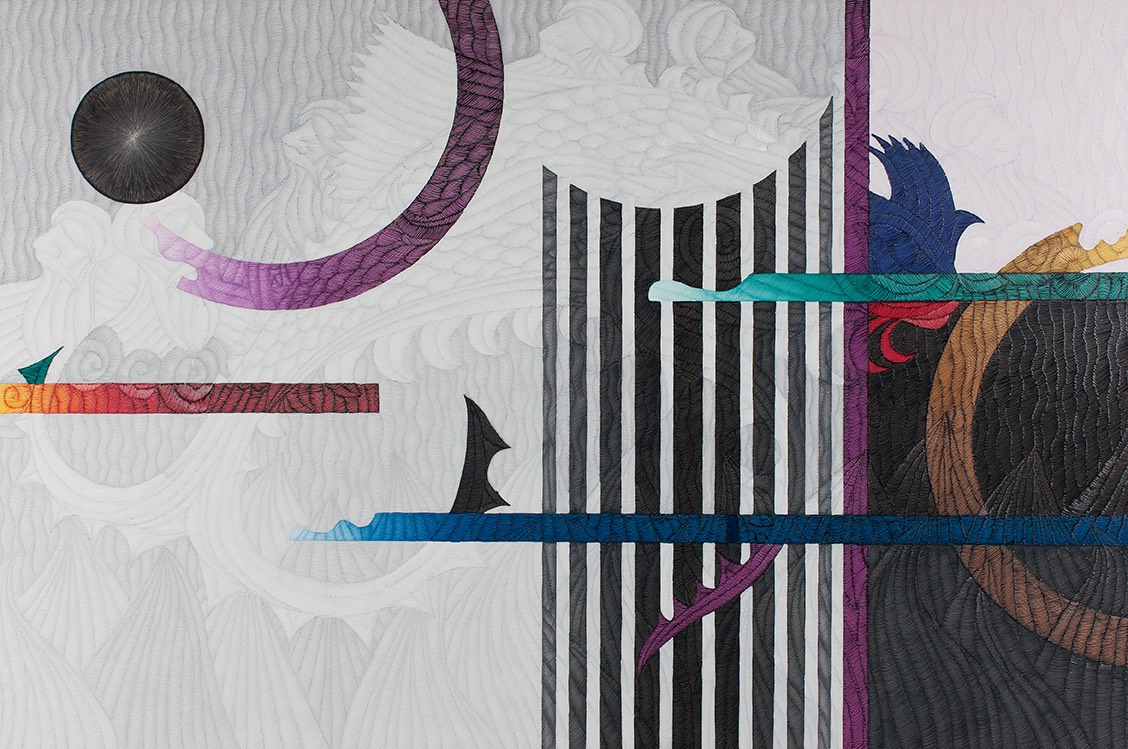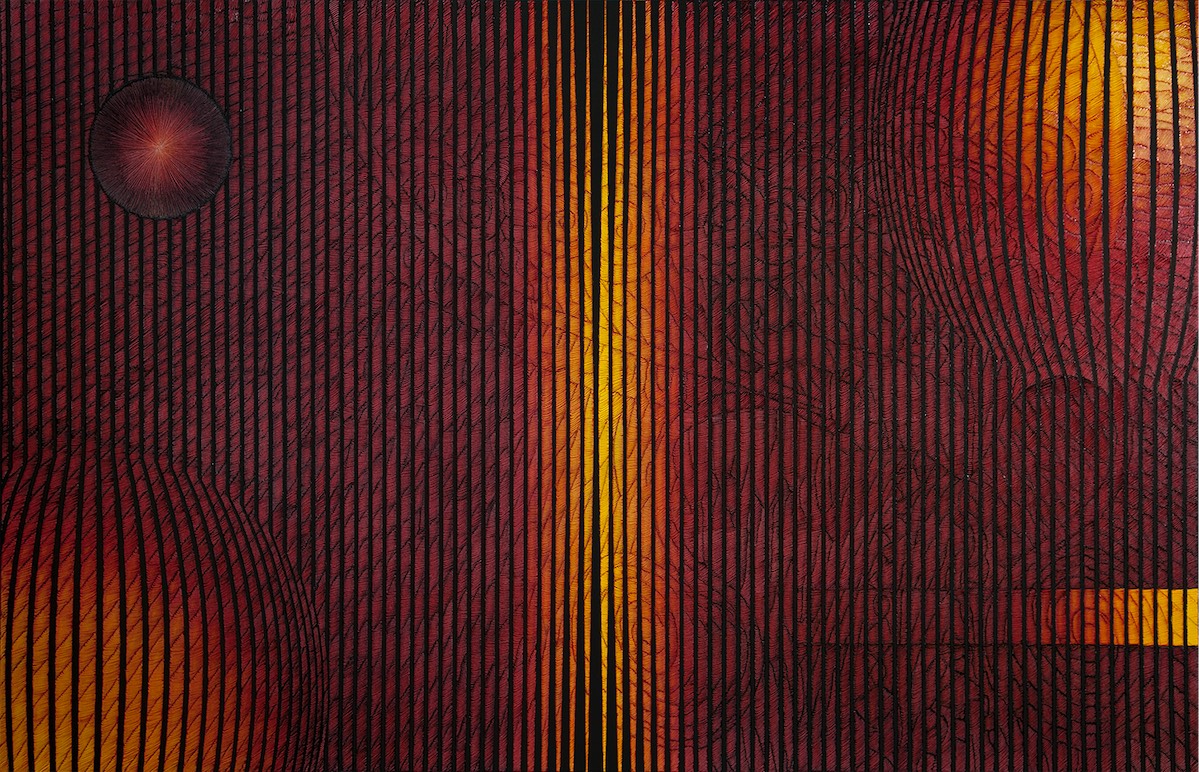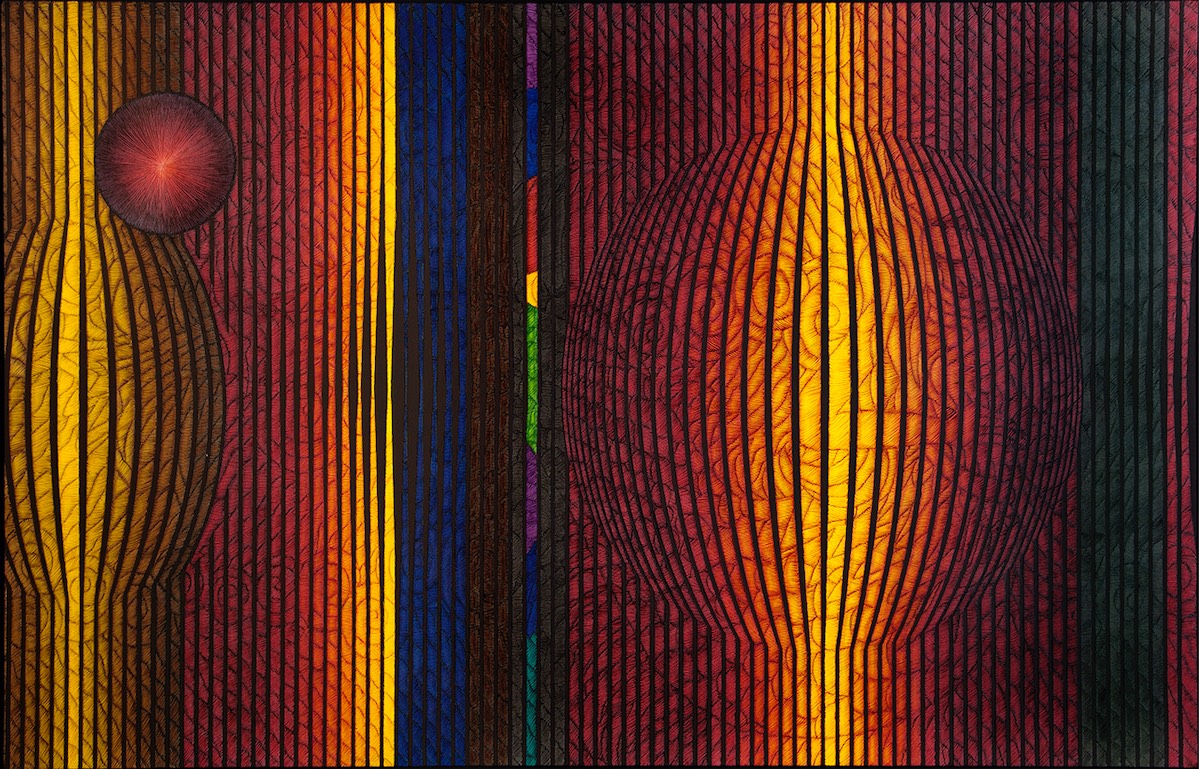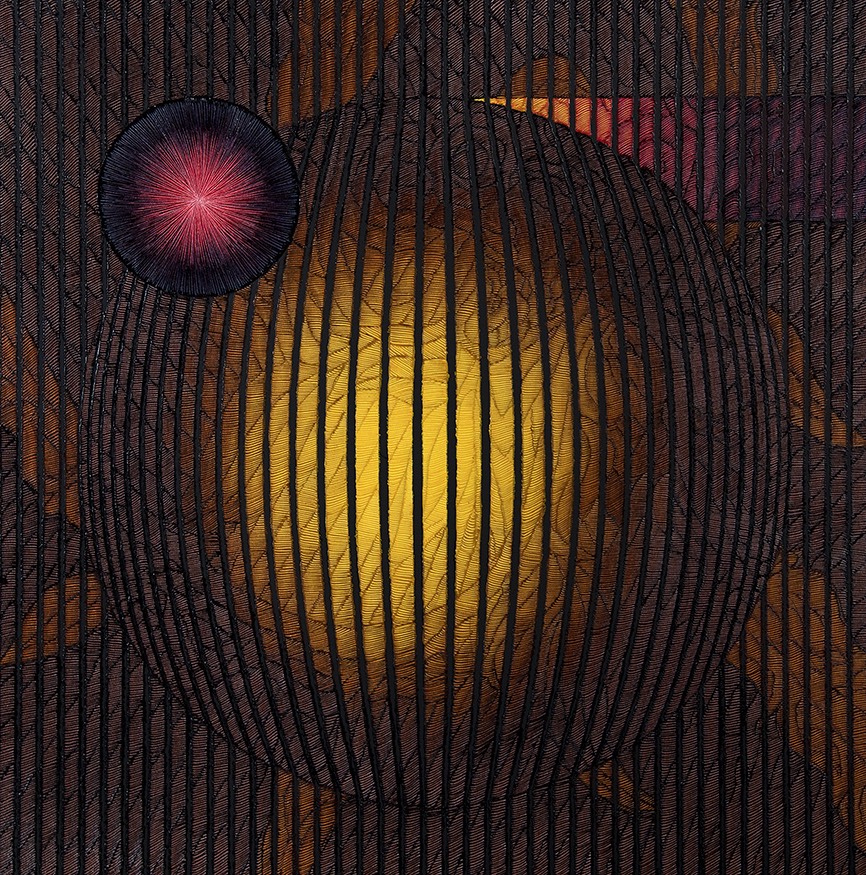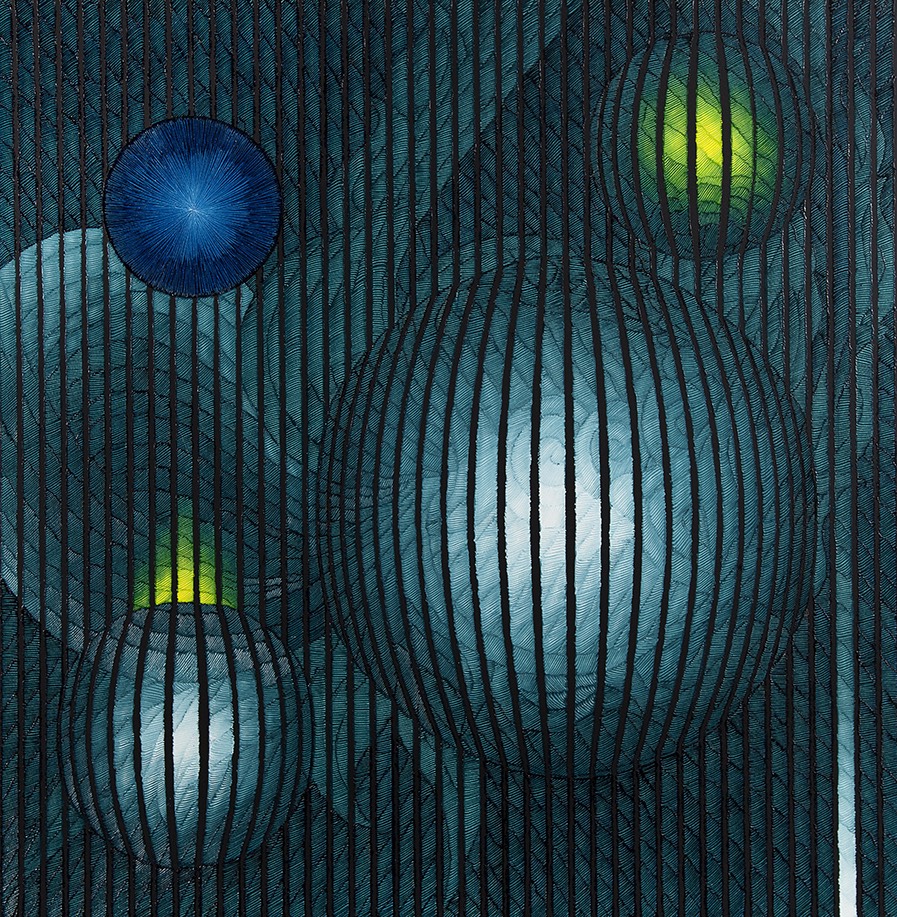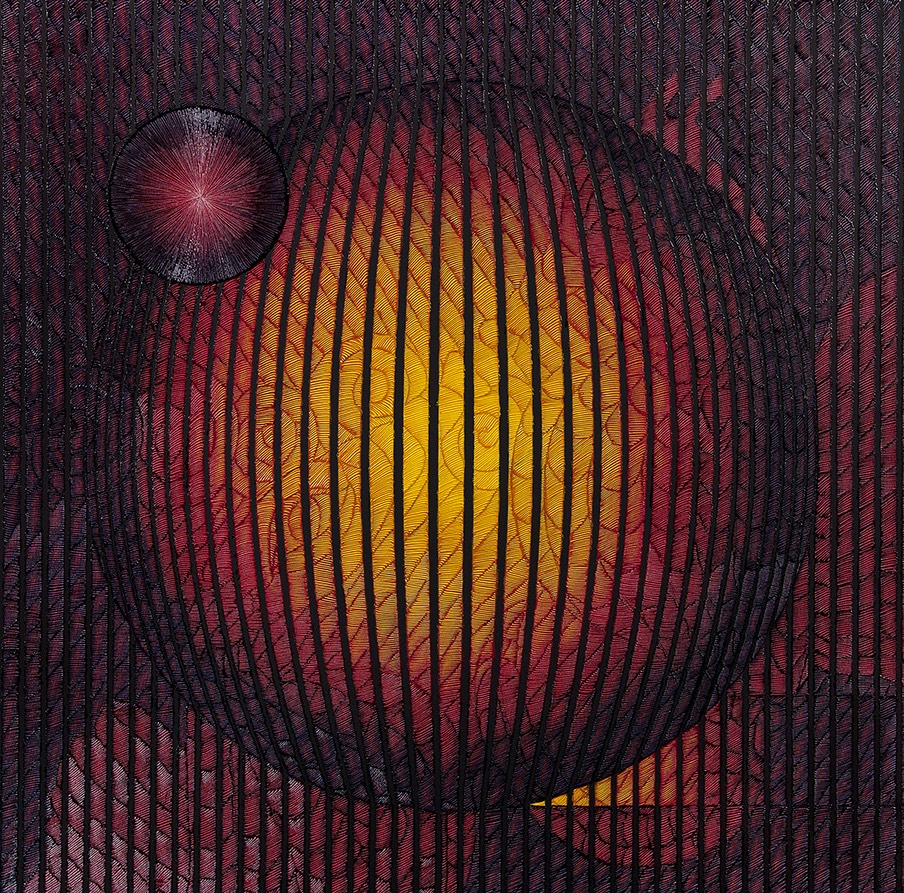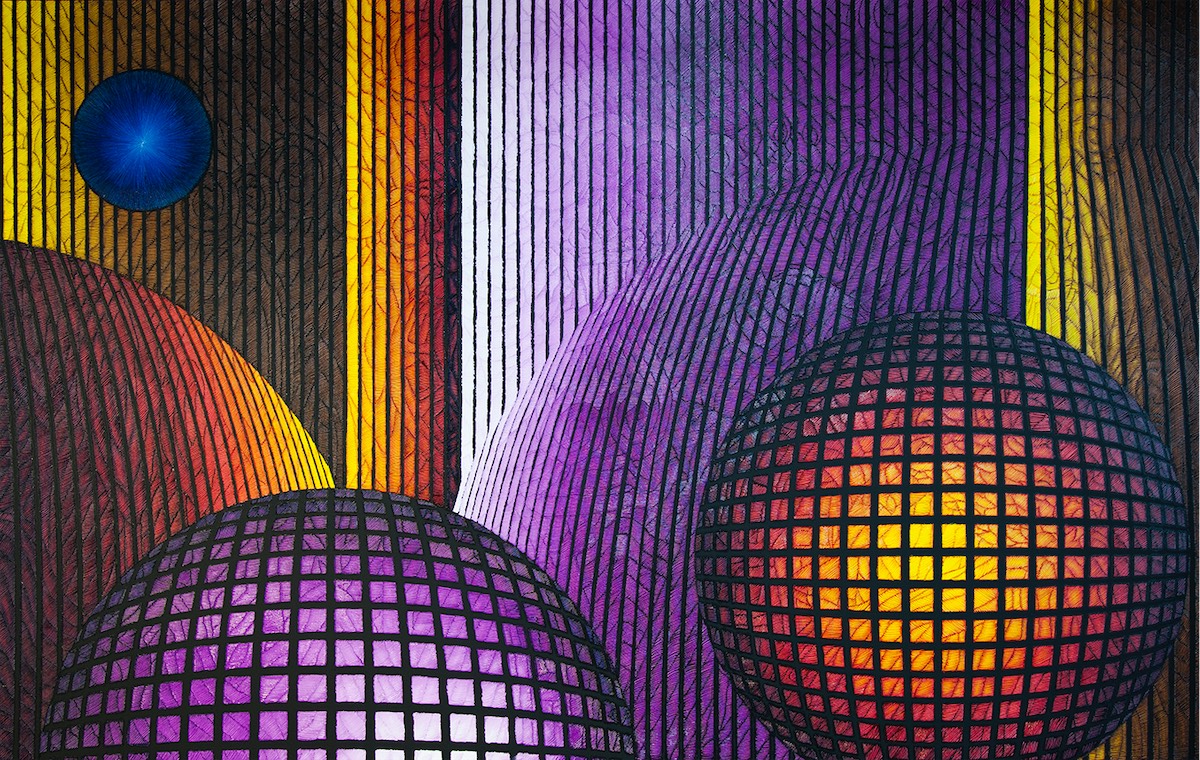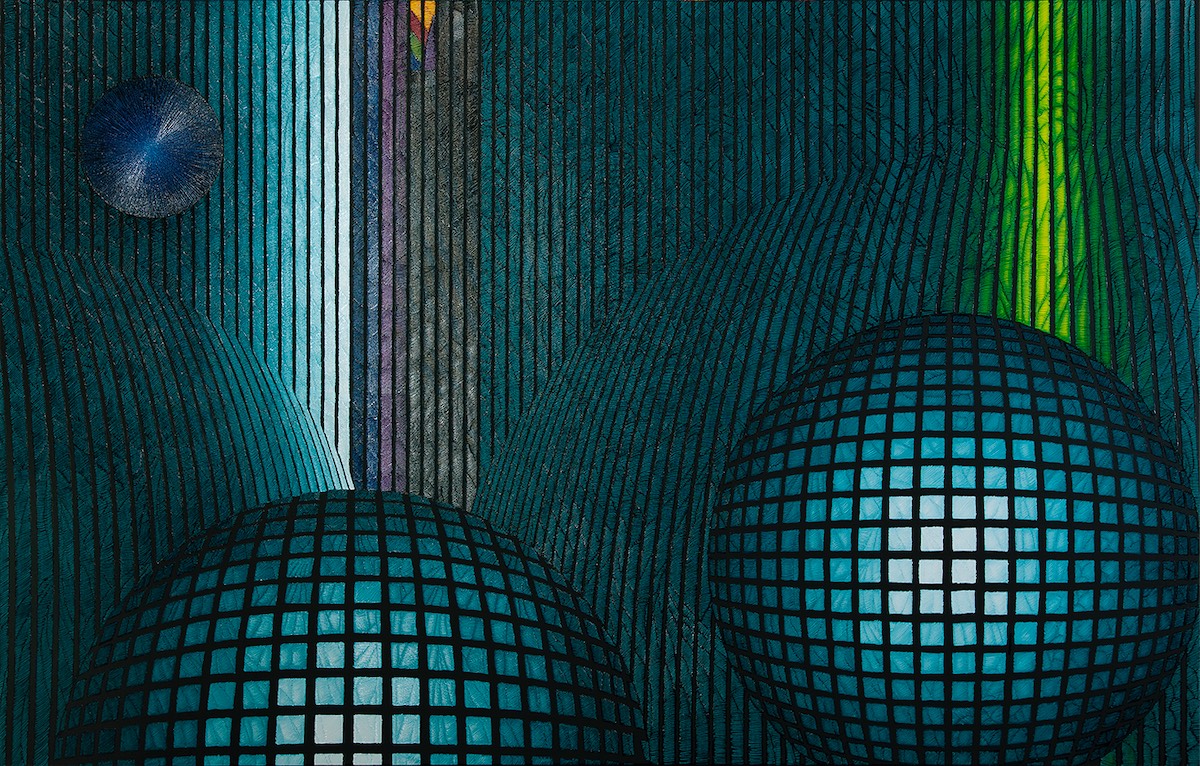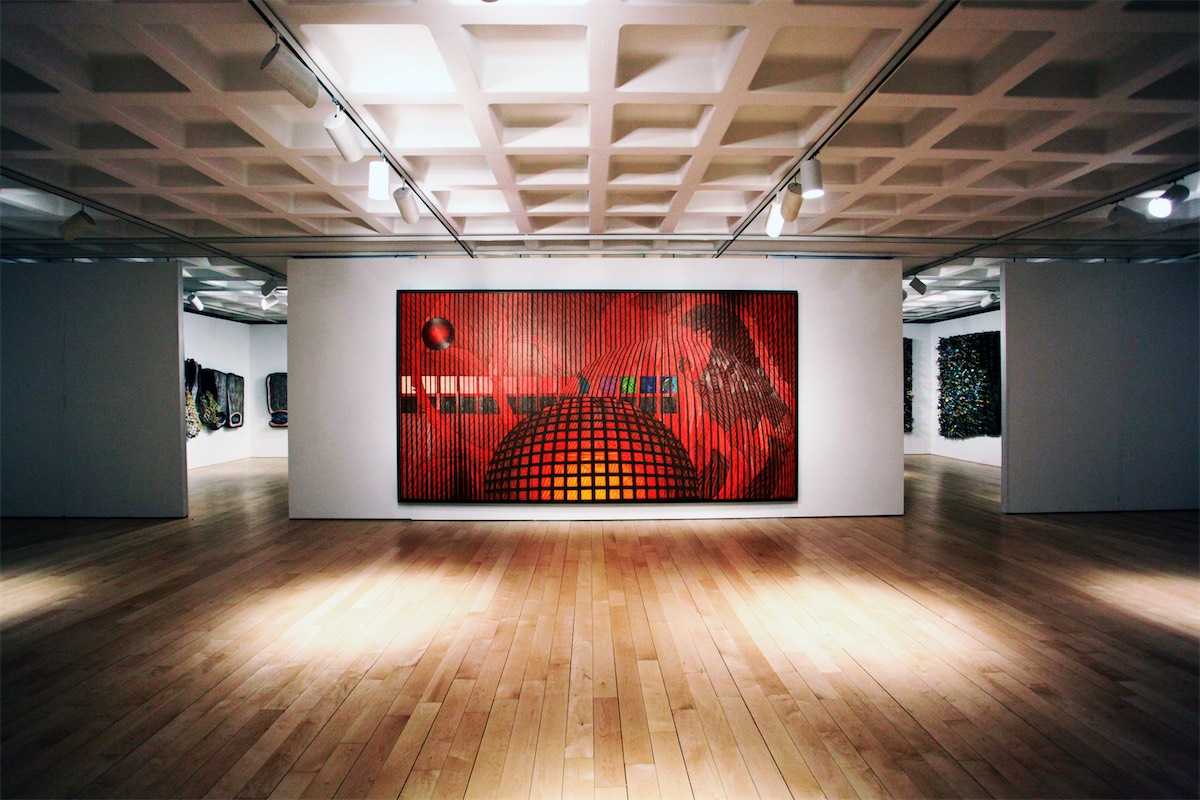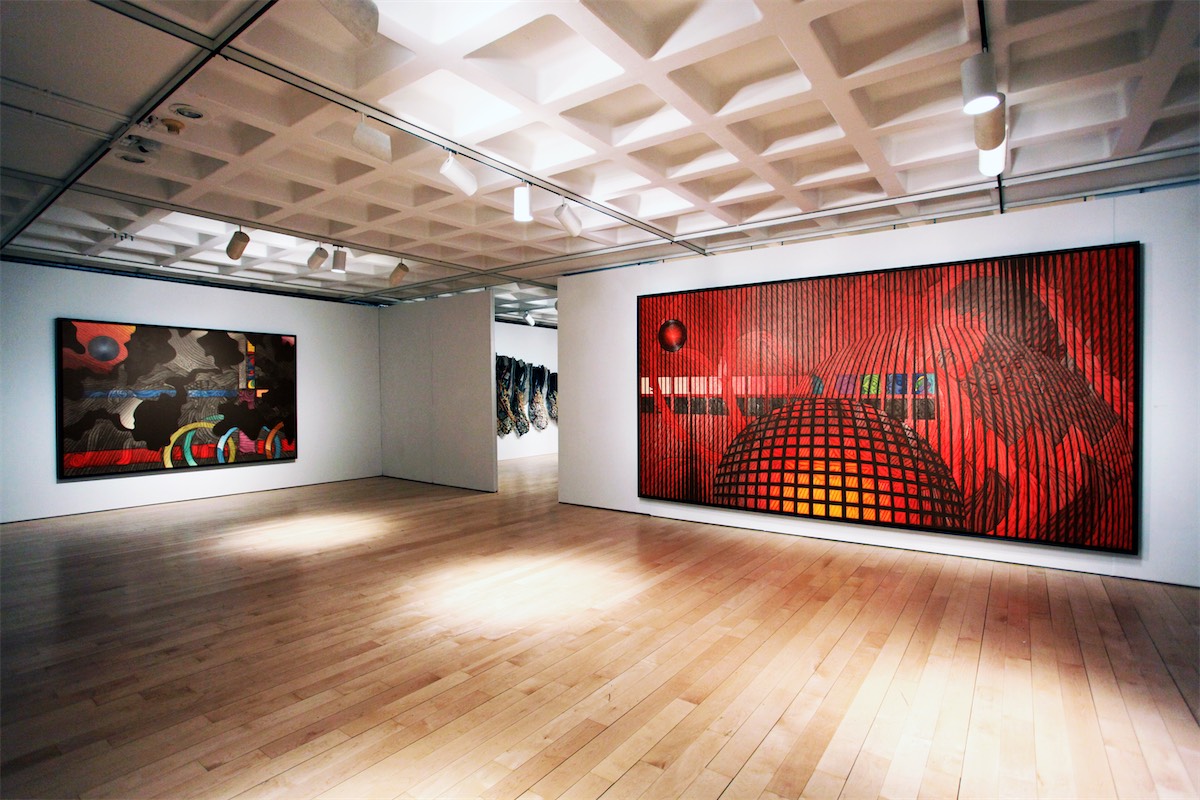26 November 2013 – 4 January 2014
Ahmet Güneştekin: Recent Paintings
Marlborough Gallery, New York
Ahmet Güneştekin: Recent Paintings features oil paintings with the artist’s signature rich colours and detailed interwoven brushstrokes. He creates powerful formal compositions as a means to convey a spiritual message. Aesthetically, his paintings are almost sculptural with their careful modulations of colour and intricate, detailed layers of lines that cause the painted forms to appear to emerge from the canvas. Adding to the sense of three-dimensionality is the shallow impasto matrix of precise brushstrokes that comprise the top layer of elaborate lines.
The artist employs these colours and lines to convey an overarching theme; he states, “My work represents the conflict between darkness and light…[my] imagination derives from darkness and seeks the light.” Consequently, the Sun is a significant motif in his work. In the exhibited works After the Sacred Ritual, The Dream of Icarus, The Sun Coronet, and Zoroaster, Guardian of the Sun, he depicts spheres that seem to emit light from within but constrained by shadowy bands that suggest menacing darkness. “My signature is the Sun,” he states, noting that “my ancestors, the Yazidis, worshipped the Sun before Islamization.” The Yazidis are a Kurdish religious group associated with the mystic traditions of Zoroastrianism and Sufism.
The exhibition accompanied by a fully illustrated catalogue with an essay by the art critic Donald Kuspit. In his essay Kuspit writes: The artist’s colours are often marked by darkness, but the light always shines through them. Light and darkness converge even as they contradict each other—paradoxically unite by way of their opposition. His Sun is divided against itself, as the difference between its luminous depth, full of energy and embryonic life forms, and its ominously dark surface, the static construction of constricting bands fixing it in place, indicate. But without them, the light would dissipate in cosmic space: The Sun would fall apart. The artist inhabits its numinous space, communing with his ancestral spirits.


